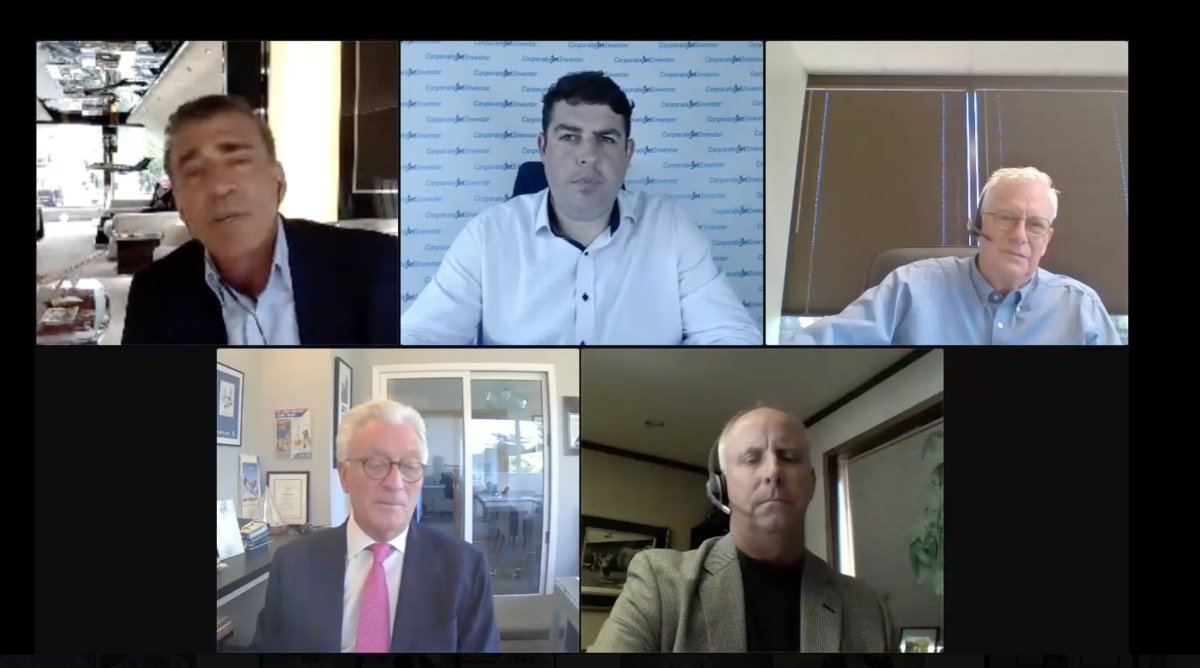

According to executives speaking at Corporate Jet Investor’s Town Hall, private aviation is watching the canary in the coal mine. Its health is not apparent.
“At the end of 2008, our business was strong, and we even told our Board, maybe we can bypass this thing, and that changed very quickly,” says Jeff Lake, CEO of MRO Duncan Aviation.
Still, even as leading indicators such as charter flight hours decline, capacity is booked for the rest of the year.
At the same time, supply chain and labor issues that started last summer continue to hamper industry performance.
“Be careful what we ask for. As an industry, we always say we want more business, and it is more than we can handle. Now, we’re in a whack a mole where you take care of one issue, and something pops up,” says Steve Varsano, CEO of London-based aircraft broker The Jet Business.
While Jay Mesinger, CEO of Mesinger Jet Sales, said one client’s aircraft has been waiting more than two months for parts, Lake said in addition to a shortage of maintenance technicians; it is often hard to get tires. There are even shortages of grease and lubricants.
He says Duncan is trying to find a creative way to make slots for pre-buy checks that pop up on short notice at the end of the year. That’s when buyers seek to consummate deals for tax purposes.
Argus International CEO Joe Moeggenberg told listeners that charter flight hours are falling in North America because “It’s just gotten too expensive.” He cites rising fuel prices as dampening demand.
That, he and others say, is going to impact the wave of new entrants who were lured by unrealistic promises.
“First-time buyers were being told you can charter the plane out (and with charter revenue offsetting expenses) fly for free, and we all know that’s not real,” says Varsano.
Noting the recent price for jet fuel at Teterboro reached $12 per gallon, Varsano said for a large cabin jet, that equates to an extra million dollars per year on fuel.
Another unpleasant surprise Varsano says is buyers are finding out how expensive 30-year-old jets are to operate. For those who are trying to rack up charter hours, the cost of maintenance is driven by flight hours.
At the same time, Varsano says demand from buyers shows signs of ebbing.
“I’m seeing indicators where more airplanes are coming on the market. (Before) an airplane came on the market, and (there were) five offers and people were buying stuff – no pre-buys, (they were) buying from pictures, and that’s changed. More deals are falling apart. People were just pulling the trigger too quickly.”
He says over the last three weeks, he has tracked 17 price reductions after not seeing any for months.
If there are signs that demand may slacken, CJI’s Editor Al Whyte warns that “China has yet to open up.” It is currently a net seller in the aircraft market.
And despite the rising costs of buying, operating, and chartering jets, the meltdown in airline service will drive new customers.
“The addressable market (for charter and jet cards) will increase because the airlines are so difficult, and there are a lot of people who can afford it,” says Varsano.
Still, it’s unsure whether the industry is ready to handle the demand.
Moggenberg notes there is now a bottleneck with training. “Corporate flight departments and charter operators) can’t get their pilots current or a new pilot in for training has become a huge issue, and that’s impacting flight activity.”
He predicts a downward slide is in sight. “Once (new private jet owners) see a downturn in (charter) revenue, and once they get their bills, those airplanes could be back on the market, and things will start to balance out again.”
That brings another question – stability?
While Whyte noted CARES Act assistance buoyed the industry when flying fell by 80% at the outset of Covid. Mesinger questioned how well positioned segments of the industry are to handle a downturn in demand.
“The flight activity is what drives the industry. If they aren’t flying, they aren’t buying gas, they aren’t getting maintenance,” says Moeggenberg.
Panelists noted rising costs and supply chain issues show no signs of going away.
One executive who was in the audience later told me, “The way I hear it, we may soon find out who’s swimming without their shorts.”